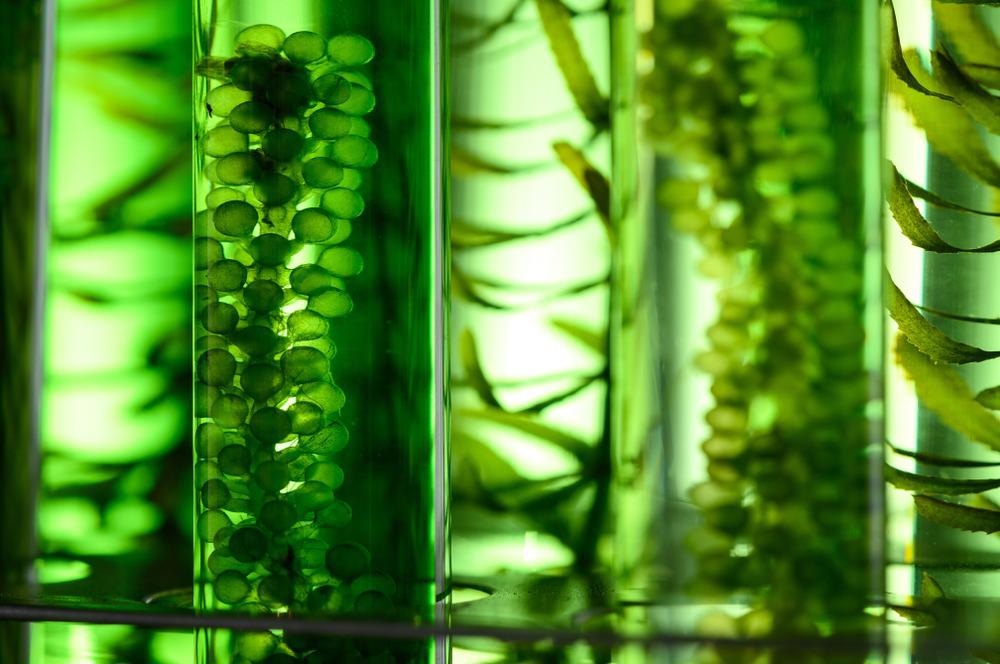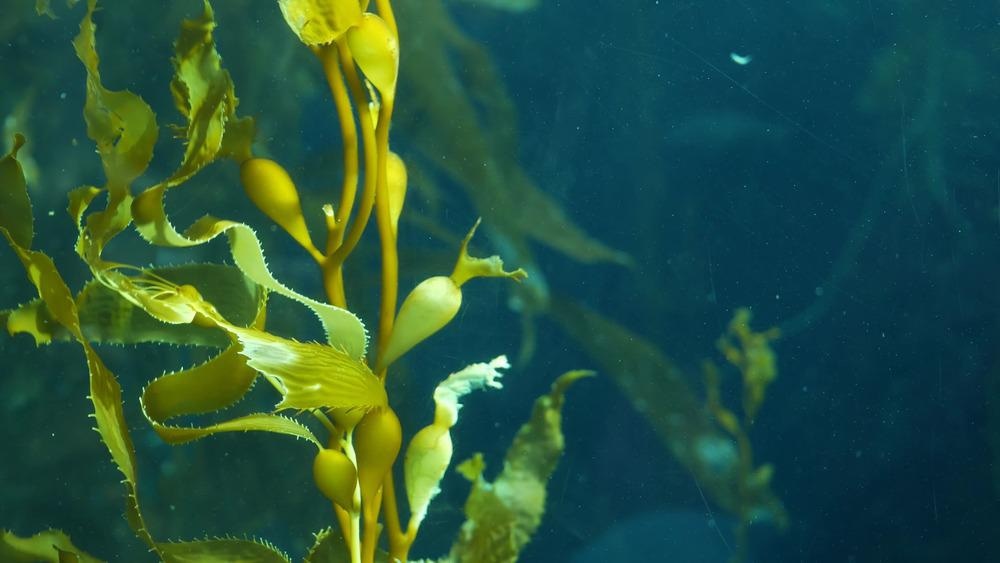Algaeing, a startup company initiated in 2016, has used algae as a novel source to produce fibers and dyes for the textile industry. This method of textile production provides a greener solution and has redesigned the textile industry.

Image Credit: Chokniti Khongchum/Shutterstock.com
Algae are a large and diverse group of eukaryotic photosynthetic organisms that are predominantly found in the aquatic ecosystem. These organisms lack true leaves, stems, and roots.
Algae are thought to be the very first unicellular organisms that inhabited the planet. They can convert atmospheric carbon dioxide into useful bioactive products. Several studies on algae have proved that they are a rich source of fatty acids, minerals, and vitamins.
Algae (seaweed) are aquatic organisms that serve as renewable, economical, and sustainable sources of biofuels, bioactive medicinal products, and food ingredients. Algae are also used for wastewater treatment. There are many challenges associated with algae production, such as the growth rate, strain isolation, product synthesis, etc.
However, researchers have successfully established or are in a process of developing many cutting-edge techniques to enhance growth and obtain commercially important products. This article focuses on a novel application of algae in the textile industry.
Algae in the Textile Industry
The largest natural fiber that is produced in the world is cotton. The conventional method of textile production contributes to 10% of global carbon emissions. As only 15% of textiles are recycled, the rest of the fabrics are either incinerated or dumped into landfills. Scientists across the world are working hard to develop sustainable products using low energy and leaving a minimal carbon footprint.
Algaeing has revolutionized the textile industry by using algae as a textile source. Renana Krebs, CEO, and co-founder of Algaeing and an extensively experienced fashion industry professional pointed out that 2,700 liters of freshwater are required to produce cotton, which is equivalent to an individual’s drinking water for two years. She claims Algaeing's fibers reduce water use by 80%.
Algaeing produces non-toxic, biodegradable, and natural fibers and dyes for textile using algae. Unlike conventional methods, its processes require significantly less water and energy for the development of textile products.
Another important aspect of Algaeing is zero waste and pollution. In a nutshell, Algaeing converts algae into a liquid formula that can be utilized as textile dyes. Further, Algaeing has developed a unique process that involves the addition of cellulose (plant fiber) to the liquid formula to develop fibers for the textile industry. The company has patented its technology and aims for its commercial launch in 2022.
Production of Algae Using Vertical Farming
Algaeing procures its primary source (algae) from another company named Algatech, which grows algae via vertical farming. In this system of farming, algae are grown indoors at optimized conditions, in vertical stacks using seawater and solar energy.

Image Credit: Dogora Sun/Shutterstock.com
Therefore, compared to cotton that is grown in large agricultural fields and utilizes chemical fertilizers and pesticides to increase its yield, enhanced algal growth is realized in vertical farming, which is a cost-effective and environmentally friendly approach.
Advantages of Algaeing Products
Typically, synthetic dyes (e.g., azo dyes) used in the textile industry contain various chemicals and heavy metals, which are not only harmful to the aquatic ecosystem, where the textile effluents are discharged, but these chemicals can also cause allergic reactions on the human skin.
Algaeing’s algae-based dye is non-toxic and allergen-free, which is extremely beneficial for consumers. Additionally, the company stated that the fabric releases antioxidants, vitamins, and other natural nutrients which are extremely beneficial for skin health.
Textile industries would benefit from using Algaeing products as they are energy and water-efficient and aid in maintaining healthy working conditions, as production does not require the use of hazardous toxins. The product could be used by every factory, implying that the installation of new equipment would not be required.
How is the Fashion Industry Embracing Algae-based Textile Products?
Erik Bang, innovation lead at H&M Foundation, has publicly supported Algaeing. He stated that the company has successfully addressed the three key crucial features or “pains” of the fashion industry. These are the utilization of freshwater to grow fibers, the use of chemicals, i.e., pesticides and synthetic fertilizers for growing cotton fibers and synthetic pigments for dyeing textiles, and the use of energy.
Compared to conventional fibers like cotton, algae-based fibers are far more expensive. However, considering the current environmental crisis, the use of sustainable and ethical products adds immense value to the brand.
Textile Sludge Waste Could Find Use in Ceramics
Other companies have also begun considering the use of algae in textiles, for example, Vollebak, an apparels brand, has created a biodegradable t-shirt using the pulp of eucalyptus and beech, and algae. Another startup company named Algiknit has developed yarn from seaweed.
The Next Steps for Algaeing
In just a few years Algaeing’s technology has attracted remarkable attention from major textile brands. In 2018 it received the H&M Foundation Global Change Award for its brilliance in developing a potential source for future textile fibers. The company has shown remarkable adaptability.
In 2020, it collaborated with Avgol, a nonwoven textile developer, which mainly manufactures hygiene, medical, and PPE products. Kerbs stated that Algaeing aims to develop new generation products to make a difference in the current challenging environment (COVID-19 pandemic) and also tackle long-term challenges, such as climate change.
References and Further Reading
Algaeing.(2021) https://www.algaeing.com/
Cairns, R. (2021) This vegan 'tech-style' startup wants to make clothes using algae. [Online] Available at: https://edition.cnn.com/style/article/israel-algae-environment-textiles-spc-intl-hnk/index.html
Yadav. G. et al. (2021) Mechanism and challenges behind algae as a wastewater treatment choice for bioenergy production and beyond. Fuel. 119093. https://doi.org/10.1016/j.fuel.2020.119093
Disclaimer: The views expressed here are those of the author expressed in their private capacity and do not necessarily represent the views of AZoM.com Limited T/A AZoNetwork the owner and operator of this website. This disclaimer forms part of the Terms and conditions of use of this website.